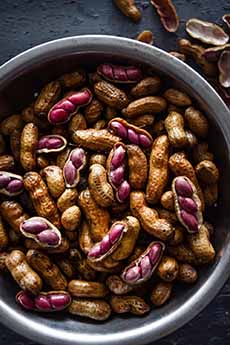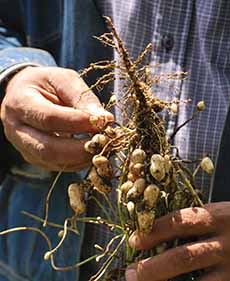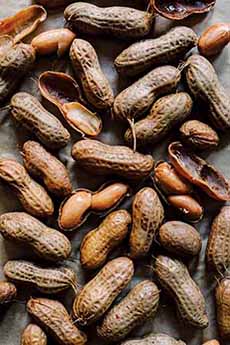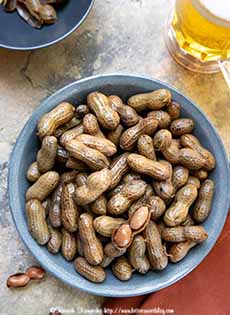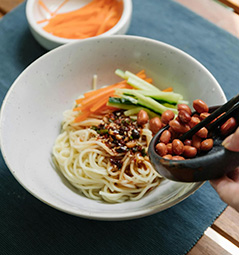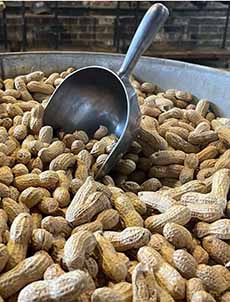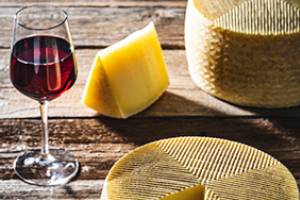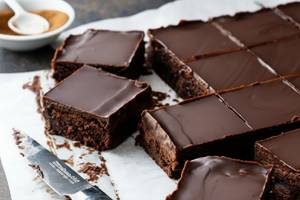Dixie Grace’s Boiled Peanuts: Another Way To Enjoy Goobers
|
Truth to tell, we had never heard of boiled peanuts, a Southern specialty. While many Southern specialties—barbecue, chicken and waffles, cornbread, hot sauce, and pecan pie, for example—not to mention Bourbon—boiled peanuts had never crossed our path. But when Dixie Grace’s wrote to us to try her boiled peanuts—and added that there was a National Boiled Peanuts Day on February 21st—how could we resist? While we missed National Boiled Peanut Day, we have enough upcoming events Easter, Mother’s Day, Father’s Day, even July 4th, to make gifts of the all-American peanut in a form beyond what most of us eat (i.e., roasted peanuts). Dixie Grace’s Boiled Peanuts are our Top Pick Of The Week because everyone should know what boiled peanuts are like. More about them follows, but first: > The history of boiled peanuts is below. > So are all the peanut holidays. > Beyond the peanut: all the nut holidays. > Why are peanuts called goobers? Simply that: green (raw) peanuts in the shell that are boiled with a bit of salt and lemon, plus other seasonings if you want them spicy or sweet. A protein-rich snack popular in the South, they deliver layers of flavor with just four simple ingredients: peanuts, salt (Dixie Grace’s uses pink Himalayan salt), water, and lemon. You end up with a peanuts that are more tender and buttery. They’re vegan, gluten-free, cholesterol-free, non-GMO, and keto-friendly. Nutritionally, peanuts are a protein powerhouse snack (7g per serving), 18% DV of fiber, gluten free, and cholesterol free, with lots of vitamins and 80+trace minerals. Dixie Grace’s are dairy free, soy free, and non GMO. Open the bag and you’ll see what looks like most, dark brown peanut shells (photos #1 and #2). Pick one up and they immediately pop open revealing the red-skinned peanuts inside. This Southern snack is popular fare at weddings, family reunions, tailgates, and other parties. Just as with regular peanuts, boiled peanuts are surprisingly versatile in the kitchen. Remember that peanuts are legumes, belonging to the same botanical family (Fabaceae) as beans, lentils, and peas. Since boiled peanuts are cooked, you can use them as you would any cooked legume. They soak up flavor well and can act like legumes in many recipes. And as an aside, although most snack peanuts are roasted, peanuts can be eaten raw, just like their fellow legumes such as fava beans, green beans, green peas, mung beans, snap peas, snow peas, and soybeans (edamame). Original Flavor: As mentioned above, just peanuts, water, lemon, and pink Himalayan salt. Hot & Spicy: With an added blend of herbs and spices that delivers just enough kick. While the peanuts are perfectly delicious as is, there’s a “Starter Kit” with dry seasoning and drizzle toppers that make a fun gift. Boiled Peanuts! > Head to DixieGraceBoiledPeanuts.com. We ate ours at room temperature, but you can heat them: Boiled peanuts have deep roots in Southern cuisine, particularly in the states of Alabama, Georgia, and South Carolina. However, their origins trace back to Africa and South America, where peanuts (originally from South America) were cultivated and later brought to North America via the transatlantic slave trade. African culinary traditions included boiling legumes, and enslaved people in the South likely adapted this technique to peanuts. By the late 19th and early 20th centuries, boiled peanuts became a popular snack among rural Southerners. They were especially common in late summer when fresh green peanuts (not fully dried) were harvested. Today, boiled peanuts remain a beloved Southern tradition, often enjoyed at roadside stands, festivals, and social gatherings. |
|
|
|
WHY ARE PEANUTS SOMETIMES CALLED GOOBERS? “Goober” comes from the Bantu word nguba, meaning peanut. Enslaved Africans brought peanuts to the American South used this word, and it entered English through Gullah, a Creole language spoken by African Americans in the Lowcountry region of South Carolina and Georgia. Its first-known use in American English is found in the early 1800s, in the southern U.S. “Goober peas” became a common colloquial term for boiled peanuts, especially among Confederate soldiers during the Civil War. “Goober Peas” subsequently became the title of a folk song popular during the war: “Eating goober peas, good old goober peas…” We learned the song in our grade school songbook. Here it is, sung by Burl Ives, a Grammy Award-winning folk singer who became a CBS Radio star and a film actor. “Goober” also became a slang term for a silly or clumsy person (some people will remember Goober Pyle from The Andy Griffith Show). But originally, the word just meant “peanut.” And that’s why a popular brand of chocolate-covered peanuts is called Goobers. CHECK OUT WHAT’S HAPPENING ON OUR HOME PAGE, THENIBBLE.COM. |
||

